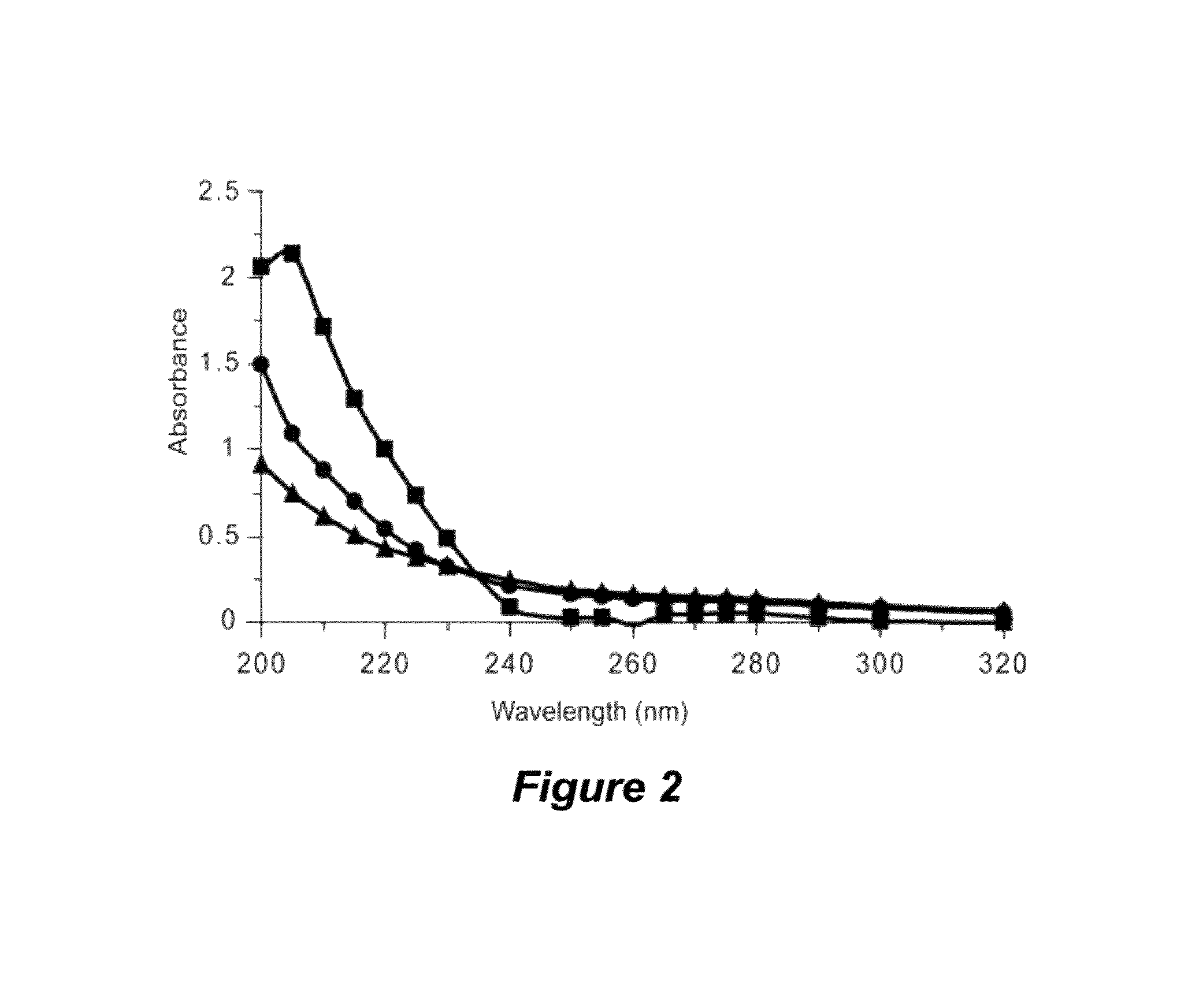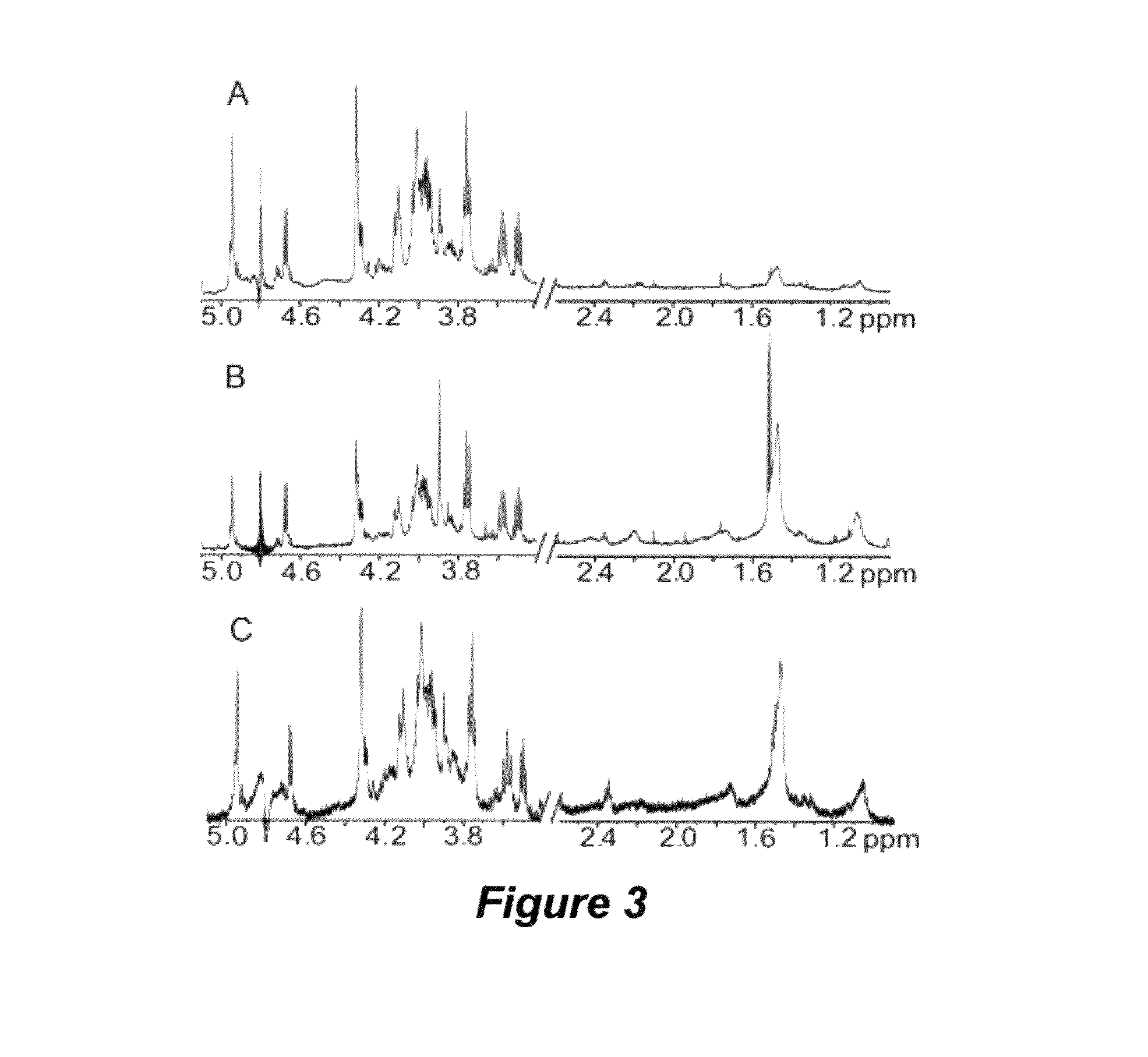Saccharide antifreeze compositions
a technology of compositions and sugars, applied in the field of sugar antifreeze compositions, can solve the problems of significant challenge to the survival of organisms in subzero winter temperatures, and achieve the effects of reducing ice crystal formation, reducing or avoiding frostbite, and reducing cellular freezing
- Summary
- Abstract
- Description
- Claims
- Application Information
AI Technical Summary
Benefits of technology
Problems solved by technology
Method used
Image
Examples
example 1
Thermal Hysteresis Factors Isolated from U. ceramboides
[0136]Thermal Hysteresis Factors (THFs) Isolated from U. ceramboides are Highly Active and Contain Little or No Protein.
[0137]The THFs in adult darkling beetles, U. ceramboides, from interior Alaska were investigated because they tolerate freezing to −60° C. in midwinter and were reported to exhibit ˜0.4° C. of TH in their hemolymph after cold acclimation (Duman et al., (2004) J Insect Physiol 50:259-266). TH values 0.5° C. of TH in the hemolymph of U. ceramboides is consistent with observations on other freeze-tolerant arthropods (Walters et al. (2009) J. Exp. Biol. 212:305-312).
[0138]To isolate the THF, 40.3 g of cold-acclimated U. ceramboides was homogenized and molecules of increasing cell membrane affinity were solubilized in three successive extractions. THFs present in each extract (R1, soluble fraction; R2, first membrane-associated fraction; R3, second membrane-associated fraction) were separated from other solutes by ...
example 2
Thermal Hysteresis-Producing Xylomannan Glycolipid Antifreezes
[0185]The presence of large-molecular-mass, thermal hysteresis (TH)-producing antifreezes (e.g., antifreeze proteins) has been reported in numerous and diverse taxa, including representative species of fish, arthropods, plants, fungi, and bacteria. However, relatively few of these antifreeze molecules have been isolated and chemically characterized. A novel non-protein xylomannan glycolipid with TH activity was recently isolated from the freeze-tolerant beetle, Upis ceramboides (described above in Example 1; see also Walters et al., Proc. Natl. Acad. Sci. USA 2009, 106:210-215 and references cited therein). NMR, sugar composition and enzymatic analyses revealed that a xylomannan was responsible for the observed TH. As described below, the TH-producing xylomannan compounds are shown to be widely distributed in both freeze-tolerant and freeze avoiding organisms across phylogenetically diverse taxa.
[0186]Diverse species were...
example 3
Frostbite Prevention Formulations
[0233]The antifreeze glycolipid compositions (AFGLs) described herein can be used for a variety of therapeutic and cosmetic applications. A major use of the compositions involves the formulating the glycolipid composition into a topical formulation for application to human skin. Because of the lipophilicity of the AFGL compounds and compositions, the AFGLs can penetrate skin, thereby reducing the risk of ice nucleation and protecting the tissue's cells if ice formation does occur. Such application can increase the resistance of human skin to frostbite, for example, at temperatures near or below 32° F., and can minimize the resulting damage if cellular freezing does occur.
[0234]In addition to the AFGL component, the topical formulation can also include antifreeze proteins (AFPs), inhibitors of apoptosis or reperfusion injury, and cryoprotectants such as glycerol, dimethylsulfoxide (DMSO) and / or low molecular weight sugars. The topical formulation can ...
PUM
| Property | Measurement | Unit |
|---|---|---|
| wt. % | aaaaa | aaaaa |
| concentration | aaaaa | aaaaa |
| average molecular weight | aaaaa | aaaaa |
Abstract
Description
Claims
Application Information
 Login to View More
Login to View More - R&D
- Intellectual Property
- Life Sciences
- Materials
- Tech Scout
- Unparalleled Data Quality
- Higher Quality Content
- 60% Fewer Hallucinations
Browse by: Latest US Patents, China's latest patents, Technical Efficacy Thesaurus, Application Domain, Technology Topic, Popular Technical Reports.
© 2025 PatSnap. All rights reserved.Legal|Privacy policy|Modern Slavery Act Transparency Statement|Sitemap|About US| Contact US: help@patsnap.com



